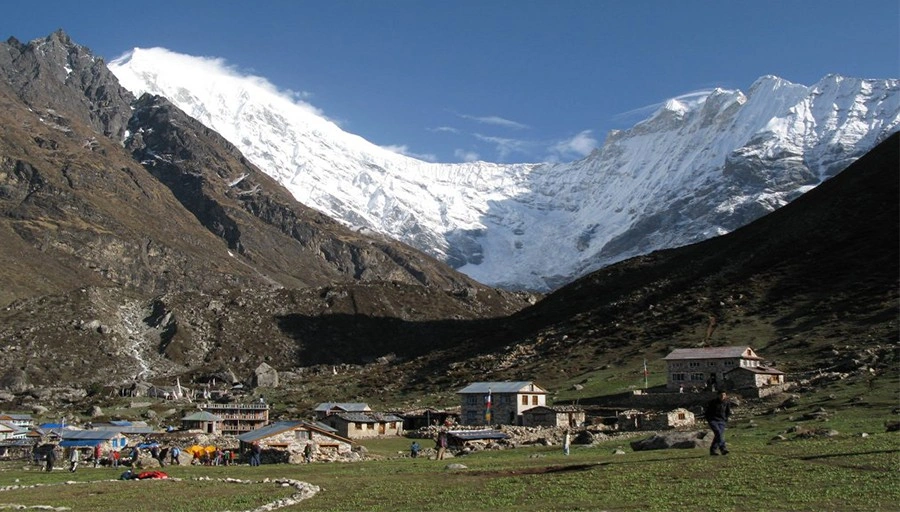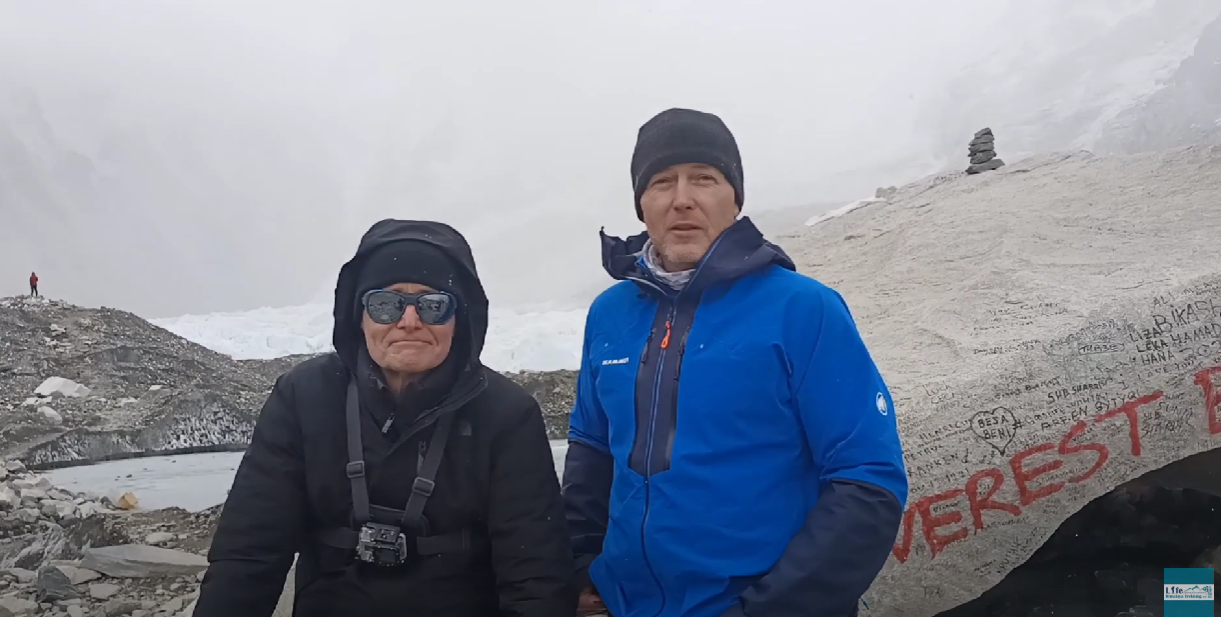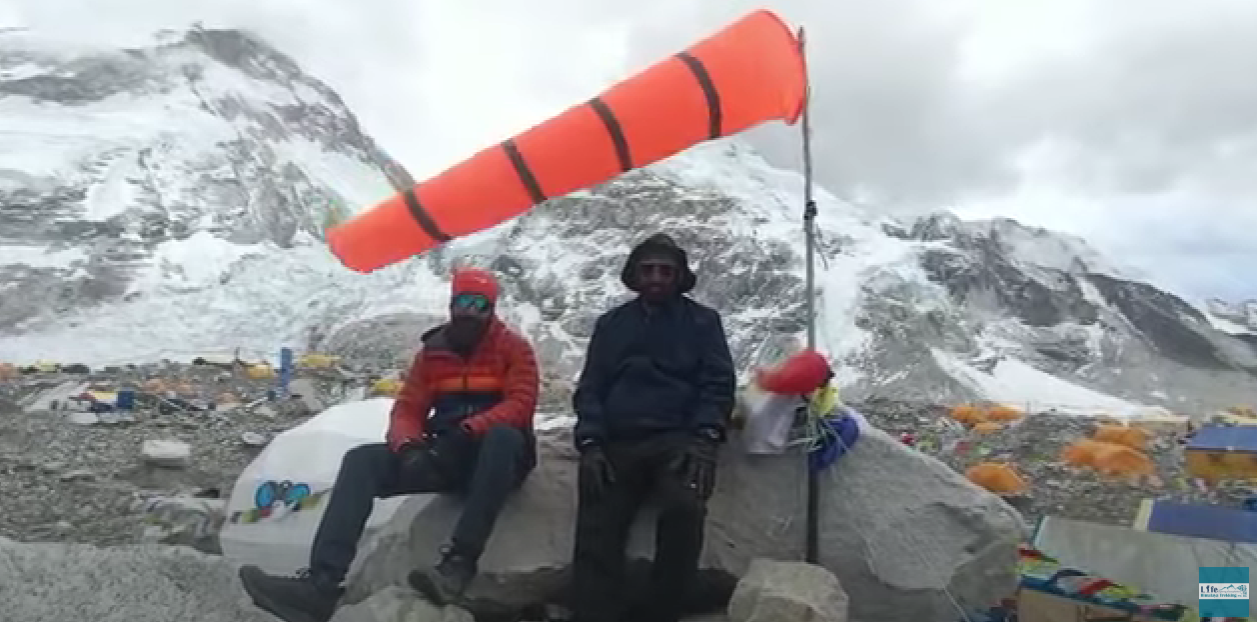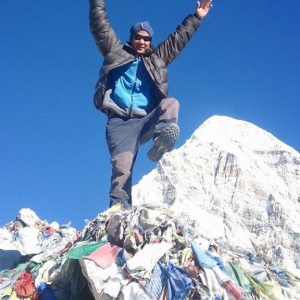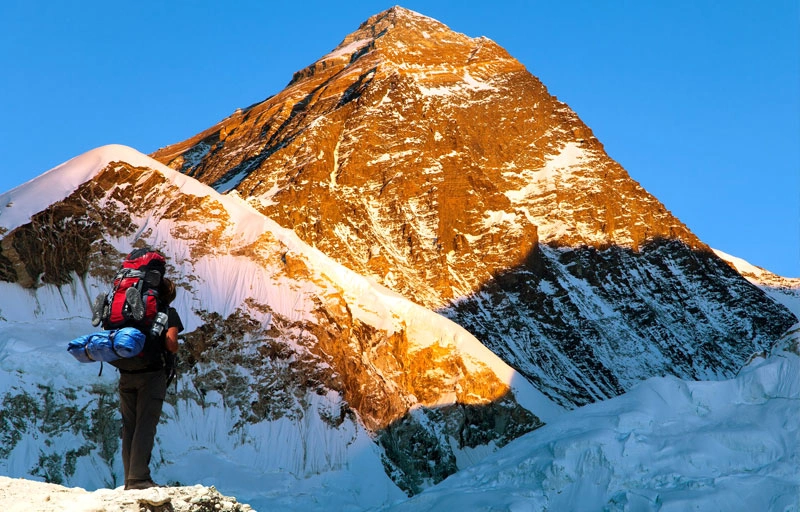Max. Altitude
5,184 m/17,008 ft.
Best Season
Oct -Dec & March-May
Activity
Trekking
Start / End Point
Kathmandu/Kathmandu
Overview of Tamang Heritage and Langtang Valley Trek
Explore the Tamang Heritage and Langtang Valley Trek in a 15-day trip to northern Nepal. It is a local culture mixed with a mountain beauty trip. It begins by scenic driving amidst green hills, terraced fields, and peaceful villages in Kathmandu to the Tamang region. Every day will take you nearer to the mountains, to the mountains, warm people, and the simple mountain life.
The trail winds through traditional stone villages, rhododendron forests, and along pristine rivers. Snow-capped peaks like Langtang Lirung and Ganesh Himal tower above, providing an amazing backdrop. The trek offers a new vista and insight into mountain life every day. In villages like Gatlang, Thuman, and Briddim, you will find simple stone houses and Buddhist monasteries.
The paths are lined up with colorful prayer flags and ancient chortens. You will have organic local foods (dal bhat and veggies) cooked by mountain families. Their traditions are a living experience when you share stories with sociable Tamang hosts. The Tamang Heritage and Langtang Valley Trek brings you into this distinct cultural scenery.
After the Tamang villages, the trail ascends deeper into the Langtang Valley. You will pass through Langtang Village (3,430m) and climb to Kyanjin Gompa (3,870m), a centuries-old monastery.
On clear days, you can see Kyanjin gives 360° views of Langtang Lirung, Langshisha Ri, and Ganesh Himal. An optional hike to Tserko Ri (4,985m) rewards you with a panorama of the entire glacier valley. The surroundings of Kyanjin are covered by alpine meadows and yak pastures.
Each evening, you will relax in a lodge among friendly monks and fellow trekkers under a starry Himalayan sky. This 15-day itinerary is ideal for fit travelers and families. You will walk approximately 4-6 hours daily with pauses and some acclimatization stops. Accommodation is in comfortable tea houses (mountain lodges) which have basic facilities.
Life Himalaya offers experienced English-speaking guides and porters to haul your equipment. At the end of the trek, you will go home with the precious memories of mountain views, of cultural experience, and of the Himalayan hospitality. It is also known as the Langtang Tamang Heritage Trek.
Highlights of Tamang Heritage and Langtang Valley Trek
- Tamang culture, Tamang Heritage, and Langtang Valley Trek
- Amazing Himalayan sceneries (Langtang Lirung, Ganesh Himal, Dorje Lakpa)
- Stunning Buddhist monasteries and chortens, and Tamang villages on the way
- Local organic food and cozy tea-house hospitality
- Possible sightseeing of rare animals (red panda, Himalayan tahr)
- Blossoming rhododendron and pine trees on the picturesque path
- Affordable and easygoing family trek
Tamang Heritage and Langtang Valley Trek Itinerary
01
Arrival in Kathmandu and transfer to Hotel
Welcome to the Land of Himalayas, Nepal. Our representative happily welcomes you at Tribhuvan International Airport, Kathmandu upon your arrival with warm greetings.
Then we will easily transfer to your respective hotel with our private vehicle as per your group size. In the evening, you will be introduced to your trek guide and trip briefing session in short at our office. Overnight stay at a 3-star hotel in Kathmandu.
Maximum Altitude
1,320 m.
Accomodations
3 Star Hotel
02
Drive from Kathmandu to Syabrubeshi
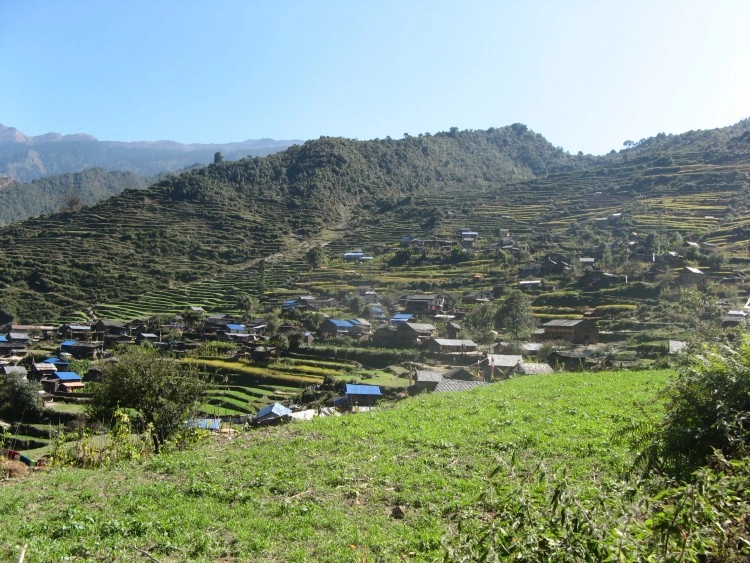 The first day of the Tamang Heritage and Langtang Valley Trek starts with an early drive to our starting point at Syabrubeshi- the gateway to the Langtang region trek. The road takes an enormous route, climbing high over the ridges to escape the Kathmandu Valley.
The first day of the Tamang Heritage and Langtang Valley Trek starts with an early drive to our starting point at Syabrubeshi- the gateway to the Langtang region trek. The road takes an enormous route, climbing high over the ridges to escape the Kathmandu Valley.
En-route provides us with beautiful mountain scenarios and the rural beauty of Nepal. Once we reach Syabrubeshi, we will go for an excursion to nearby villages.
Maximum Altitude
1,450 m.
Meals
Breakfast, Lunch and Dinner
Trek Duration
8 hours Drive
Accomodations
Lodge
03
Trek from Syabrubeshi to Gatlang Village
Today we start our day along with the fantastic breakfast in the teahouse. We begin today’s trek with a descent to Thangbuche near Chilime village following the line of stone pyramids named chortens with written white mantras.
Then we visit the Chilime Hydropower dam and ascend first by crossing the suspension bridge over the Chilime River to continue our long and exhausting treks towards Tatopani village.
After having lunch at Cherka we slowly move upwards towards the Gonggang village. We reach Tatopani village with outstanding views of the Langtang ranges and Ganesh Himal.
Tatopani means hot spring and local beliefs that the water has a healing quality that eases your aches and pains after a long walk.
Maximum Altitude
2,320 m
Meals
Breakfast, Lunch and Dinner
Trek Duration
6 hours Walk
Accomodations
Lodge
04
Trek from Gatlang Village to Tatopani
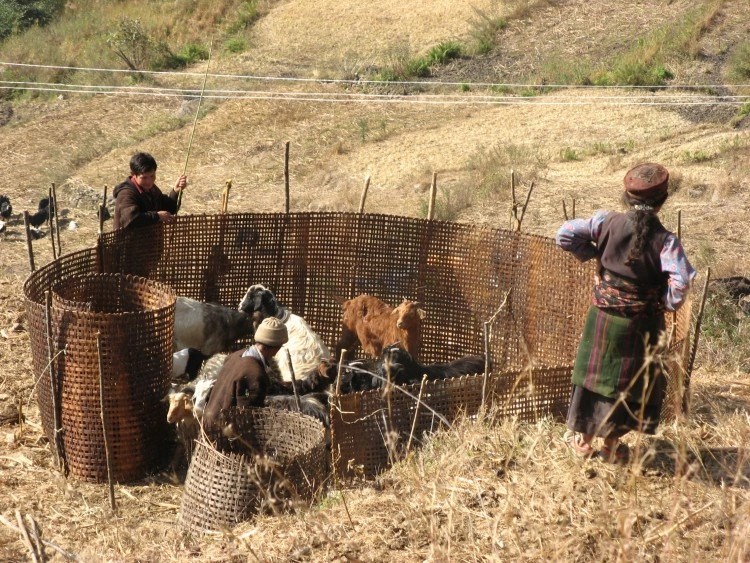 Today we start our day along with the fantastic breakfast in the teahouse. We begin today’s trek with a descent to Thangbuche near Chilime village following the line of stone pyramids named chortens with written white mantras.
Today we start our day along with the fantastic breakfast in the teahouse. We begin today’s trek with a descent to Thangbuche near Chilime village following the line of stone pyramids named chortens with written white mantras.
Then we visit the Chilime Hydropower dam and ascend first by crossing the suspension bridge over the Chilime River to continue our long and exhausting treks towards Tatopani village.
After having lunch at Cherka we slowly move upwards towards the Gonggang village. We reach Tatopani village with outstanding views of the Langtang ranges and Ganesh Himal.
Tatopani means hot spring and local beliefs that the water has a healing quality that eases your aches and pains after a long walk.
Maximum Altitude
2,607 m.
Meals
Breakfast, Lunch and Dinner
Trek Duration
6 hours Walk
Accomodations
Lodge
05
Trek from Tatopani to Nagthali Danda
After having breakfast at the teahouse our day begins by passing through the sense alpine forest as well as the Tamang settlement of Brimdang. Then after we walk a few hours uphill until we reach the Nagthali danda which is the highest pass of this trek at the height of 3,165 m.
It is a popular meditation center for local monks and priests. This place is a spectacular viewpoint from where we can enjoy the panoramic view of Mt. Langtang Lirung, Ganesh Himal, Paldor peak, and mighty peaks.
Maximum Altitude
3,165 m.
Meals
Breakfast, Lunch and Dinner
Trek Duration
5 hours Walk
Accomodations
Lodge
06
Trek from Nagthali Danda to Thuman
 Our day begins after having breakfast at the teahouse. Our day continues passing through the beautiful landscapes along with the spectacular views of mountains on the way.
Our day begins after having breakfast at the teahouse. Our day continues passing through the beautiful landscapes along with the spectacular views of mountains on the way.
Today we descend towards the beautiful Thuman village. It is another beautiful Tamang settlement with traditional houses.
Maximum Altitude
2,338 m.
Meals
Breakfast, Lunch and Dinner
Trek Duration
5 hours Walk
Accomodations
Lodge
07
Trek from Thuman to Briddim
After morning breakfast our trek begins with walking through the rhododendron forest and meadows. Our trial passes through the Bhote Koshi River and uphill towards Dalphedi village.
Then we trek upwards to Timure village which is an ancient trade route to Tibet where we spend our time for lunch. If you want to trek towards the Rasuwagadi its option depends upon your walk.
It is a historical reminder of the Nepal-Tibet relationship that has existed for many centuries. Then our trek continues through different mani walls and descends steeply towards the valley of waterfalls and Lingling village.
Similarly, our walk continues toward the beautiful Tamang village of Briddim. Briddim is a Tibetan-influenced Tamang community, ideally located in the lap of Langtang Lirung. At Briddim you will experience the warm cultural hospitality at the homestay.
Maximum Altitude
2,239 m.
Meals
Breakfast, Lunch and Dinner
Trek Duration
5 hours Walk
Accomodations
Lodge
08
Trek from Briddim to Lama Hotel
Our Tamang Heritage and Langtang Valley Trek’s 8th day begins with breakfast at a homestay where you can taste local Nepalese cuisines. We start our day with quick sightseeing around Briddim village. Then our trail slightly descends downhill through the pine forest towards the Ghopche Khola.
Then we cross the bridge over Langtang Khola and ascend on a steep trail towards the Rimche village. After having lunch our trail leads us towards the Lama Hotel.
En route to Lama Hotel if you are lucky enough you might see abundant wildlife such as Red Panda, Himalayan black bear, etc.
Maximum Altitude
2,480 m.
Meals
Breakfast, Lunch and Dinner
Trek Duration
6 hours Walk
Accomodations
Lodge
09
Trek from Lama Hotel to Langtang Village
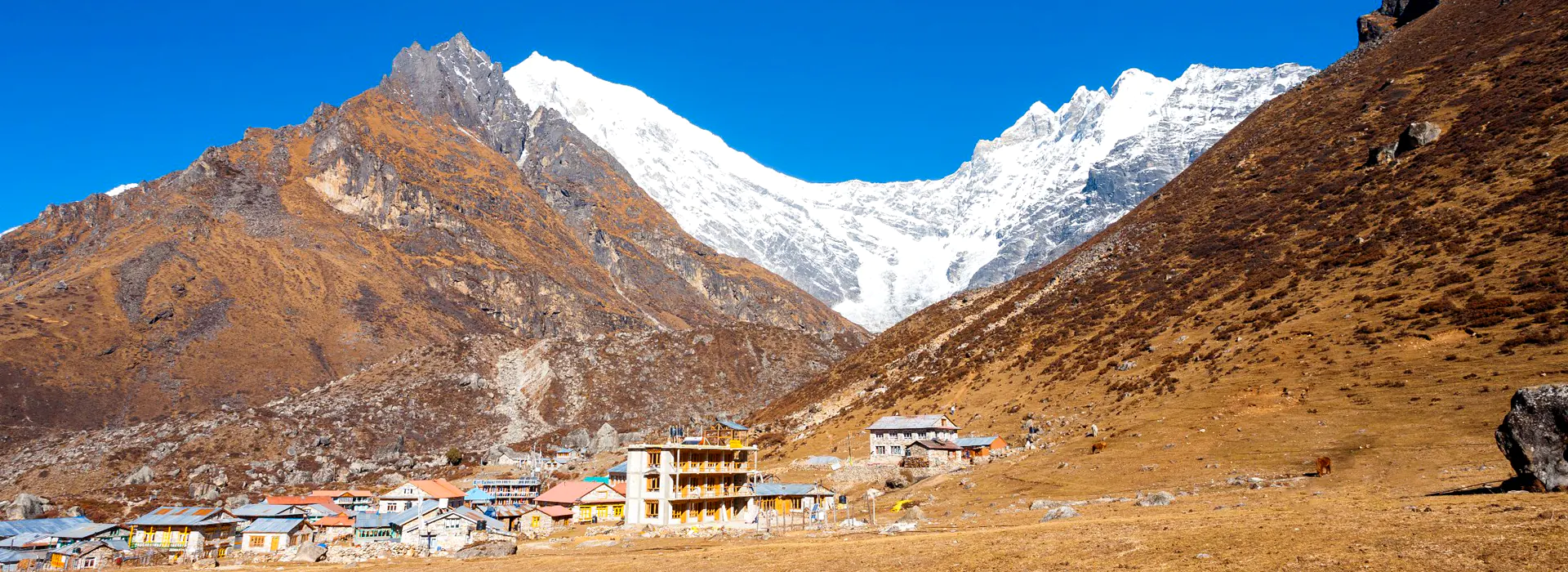 Today we continue our day after having breakfast at Lama Hotel. Accordingly, our trek continues ascending from Lama Hotel enjoying the mountain land along with the natural beauty of the Langtang region.
Today we continue our day after having breakfast at Lama Hotel. Accordingly, our trek continues ascending from Lama Hotel enjoying the mountain land along with the natural beauty of the Langtang region.
Then we reach the green meadows of Ghore Tabela. After having lunch here we begin our trek to see the first occasional sights of pure white Mt. Langtang Lirung and its ranges.
Our trail continues to climb up the widening valley, passing a few temporary settlements of Tamang, and old Buddhist monasteries to reach the beautiful Langtang village- the headquarters of the Langtang National Park.
Maximum Altitude
3,541 m.
Meals
Breakfast, Lunch and Dinner
Trek Duration
6 hours Walk
Accomodations
Lodge
10
Trek from Langtang Village to Kyanjin Gompa
After breakfast, we will start our journey following the gradual uphill trial through small villages and yak meadows.
Then we trek through Mundu village and cross several small streams and rubbles and reach the settlement at Kyanjin Gompa, the oldest Buddhist monastery in the Langtang valley.
We pass by water mills, prayer flags, and chortens, with sacred mounds of rocks with inscriptions carved on them. We also pass by the largest mani wall in Nepal, made from stone with prayers written on them.
After the short trek from Langtang village, we spend the rest of the afternoon exploring the Buddhist shrine in Kyanjin Gompa and surrounding areas with amazing views of the mountains.
Maximum Altitude
3,900 m.
Meals
Breakfast, Lunch and Dinner
Trek Duration
7 hours Walk
Accomodations
Lodge
11
Acclimatization and ascend towards Tserko RI
Today we stop at Kyanjin Gompa to ensure proper altitude acclimatization and stay active on a high-altitude trek. After a late breakfast, we will trek to ascend the Tserko RI for the spectacular paranormal view of Langtang ranges along with other mighty peaks.
Then we back to Kyanjin Gompa in the late afternoon and explore the beautiful Buddhist monasteries around there. We also visit a traditional yak cheese factory, where yak cheeses are manufactured by hand.
Maximum Altitude
5,184 m.
Meals
Breakfast, Lunch and Dinner
Trek Duration
5 hours Walk
Accomodations
Lodge
12
Trek from Kyanjin Gompa to Lama Hotel
 Our day begins with the breakfast at teahouse. Today we gently descend towards the Lama Hotel following the Lang River bank.
Our day begins with the breakfast at teahouse. Today we gently descend towards the Lama Hotel following the Lang River bank.
Most of the trekking today will be downhill as we pass through Rhododendron and oak forests and beautiful Tamang villages. Enjoy the different views of the Himalayas we slowly back to Lama Hotel for our night.
Maximum Altitude
2,480 m.
Meals
Breakfast, Lunch and Dinner
Trek Duration
7 hours Walk
Accomodations
Lodge
13
Trek from Lama Hotel to Syabrubeshi
Today is the last day of the trek in the land of the Langtang region. Leaving the mountains behind we make an alternative descent hiking a higher path from Rimche down to Syabrubeshi. Our day will be much easier as our trial passes only to descend and downhill.
Maximum Altitude
1,450 m.
Meals
Breakfast, Lunch and Dinner
Trek Duration
5 hours Walk
Accomodations
Lodge
14
Drive back from Syabrubeshi to Kathmandu
Today is the last day of your trip to Tamang Heritage and Langtang Valley Trek in Nepal. Our day begins with an early morning breakfast and takes a scenic driver toward the capital city Kathmandu.
The road takes an enormous route and descends towards the Kathmandu valley. In the evening you may visit the famous market of Thamel for souvenir shopping, herbal massage and other places of interest.
Also, you would have a farewell dinner hosted by Life Himalaya Trekking at a typical Nepalese Restaurant on the success of your journey.
Maximum Altitude
1,320 m.
Meals
Breakfast, Lunch and Dinner
Accomodations
3 Star Hotel
Transportation
8 hours Drive
15
Final Departure
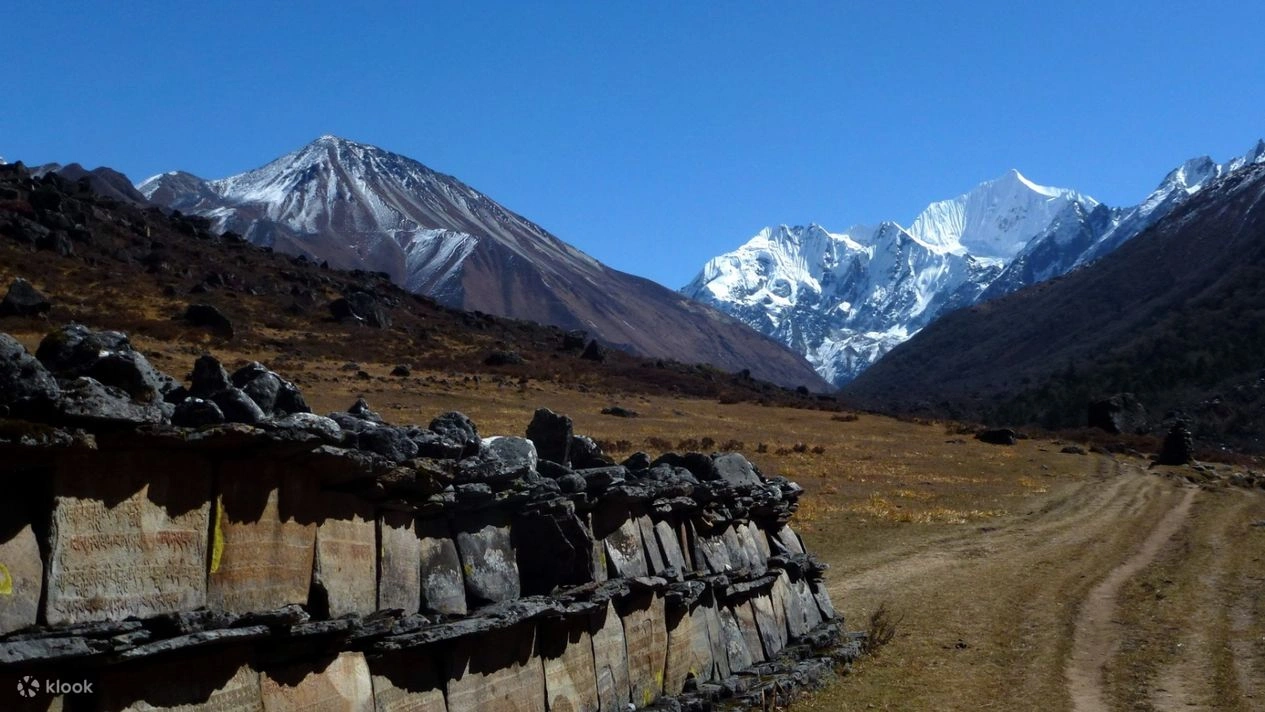
Our adventurous journey of Tamang Heritage and Langtang Valley Trek- Nepal ends today. Our representative will transfer you to the International airport three hours before your flight schedule towards your home with a warm greeting and hospitality hoping to see you next time in Nepal.
If you have more time in Nepal, we also can organize some additional activities like paragliding, bungee jumping, jungle safari, and famous city tours that you are interested in.
Maximum Altitude
1,320 m.
Meals
Breakfast
Trek Duration
15 min Drive
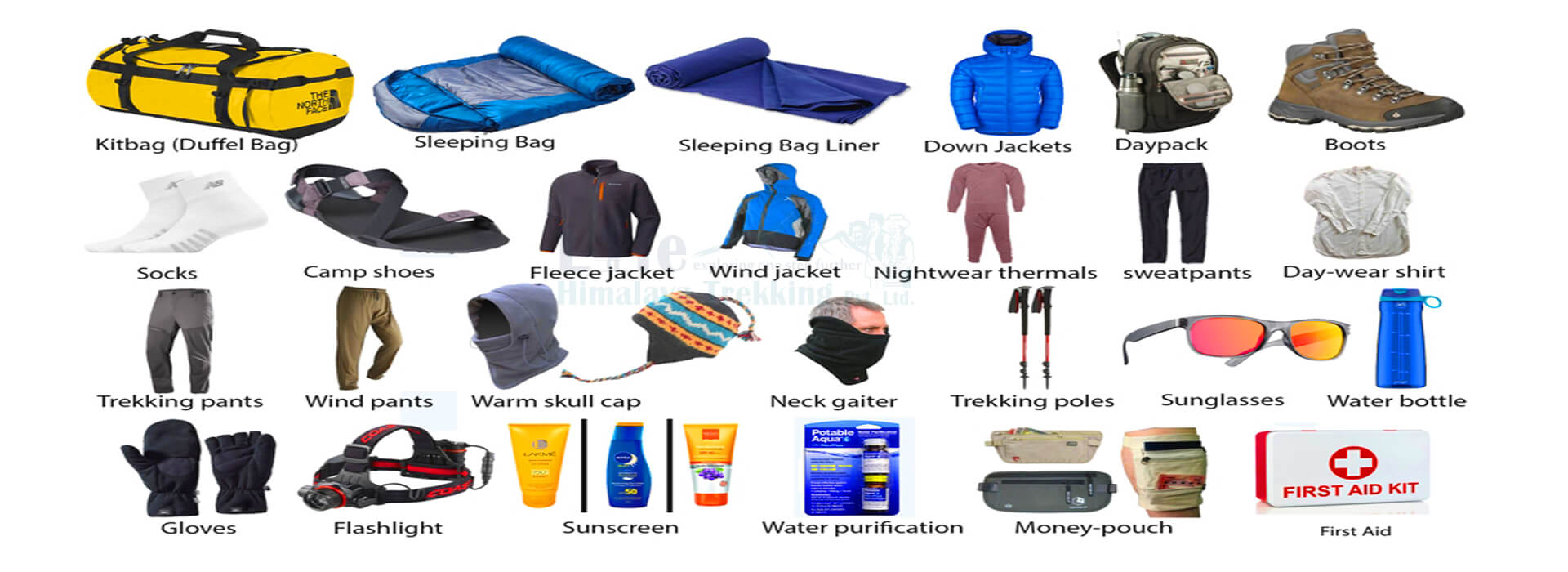

Required Equipments for Trekking in Nepal
- Breathable Underwear
- Sports Bra
- Base Layers
- Trekking Shirts
- Trekking Trousers and Shorts
- Fleece Jacket
- Down jacket (insulated jacket)
- Windcheater (water proof)
- Sun protection Hat
- Headband or Beanie
- Scarf or neckband
- Gloves (inner and outer )
- Hiking Boots
- Trekking Shoes
- Hiking Socks
- Thermal Socks
- Gaiters
- Duffel Bag
- Day pack
- Sleeping Bag
- Trekking poles
- Sunglasses
- Hydration bladder or Water bottle
- Head Lamps
- Batteries
- Personal towel
- Swiss army knife
- Sun lotion
- Medical & first-aid kit
- Woolen socks
- Waterproof jacket
- Lip Guard
- Insulated pants
- Baby wipers
Required Equipments for Climbing in Nepal
- Water bottle
- Batteries and bulbs
- Flashlight
- Personal towel
- Swiss army knife
- Rucksack
- Sun lotion
- Medical & first-aid kit
- Sewing kit
- Polypropylene/wool socks
- Other required equipment
- Sleeping bag
- Down Jacket
- Waterproof jacket
- Trekking shoes/boots
- Camp shoes
- Jumperorpile jacket
- Hiking pants
- Hiking shirts
- Full–sleeves shirt
- T-shirts
- Sun hat
- Gloves
- Woolen hat
- Long underwear
- Goggles or sun glasses
- Gaiters
- Sun block for lips
- Light cotton socks
- Mountain trekking boots
- Woolen socks to wear with boots
- Nylon wind breaker
- Insulated pants
- Nylon wind pants
- Long sleeved cotton/woolen shirts
- Sun hat
- Long cotton hiking shorts
- Fleece/wool for climbing
- Lightweight fleece
- Sleeping pad (karri mat) or thermarest
- Down high altitude sleeping bag
- Down jacket/trousers/vest
- Light cotton athletic socks and wool socks
- Water proof climbing jacket
- Head torch/batteries/bulbs
- Climbing sunglasses
- Lightweight thermal/insulated ski gloves
- Sun screen
- Warm climbing trousers
- Wool long underwear
- Other required equipment
- Climbing boots
- Gaiters
- Ice axe
- Harness
- Crampons
- Karabiners
- Tapes/slings
- Snow bars
- Ice screws
- Rock pegs
- Deadmen
- Crash hat
- Day bag
- Rucksack
- Lip salve
- T-shirts
- Ascenders
- Ascenders
- Kit bag
Whats Included
- Airport pick up and drops from Kathmandu
- Complete departure information, about the trek, transport guide, altitude sickness, and reconfirmation and extend visa service (if necessary) and extra tour service before the trek starts.
- 2 nights 3-star hotel in Kathmandu with breakfast.
- Kathmandu to Syabrubesi to Kathmandu with 4*4 jeep
- Best available Lodge (Tea House) accommodation and full board meals throughout the trek.
- Breakfast, Lunch, and Dinner, included chosen from lodge menu and twin share accommodation during the trek.
- One highly experienced, helpful, and friendly guide, porters (1 porter for 2 people) and their food, accommodation, salary, equipment, and accidental insurance for all staff
- TIMS Fee- Trekkers’ Information Management System (Please bring 3 passport-size photos for permit)
- Langtang national park entry permit fee.
- Warm Down jacket and four seasonal sleeping bags will be provided during the Langtang, Tamang heritage trekking If necessary ( down jacket and sleeping bag are to be returned after the trip )
- Life Himalaya Trekking Duffel bag and T-shirt, Trek Map
- First Aid kits for the staff and the groups.
- Services coordination for emergency and rescue operations
- Government taxes & office service charges.
- Life Himalaya t-shirt and duffel bag to take ( value 60$)
- Achievement Certificate certifies with guide and director.
- Farewell dinner with local tropical Nepali food and cultural dance
Whats Excluded
- Meals not quantified in the ‘Meal Inclusions’ in the itinerary’
- Travel insurance
- International airfare
- Nepal entry visa charge.
- All beverage and other personal expenses.
- Snacks and other personal expenses
- Hot shower during the trek.
- Personal trekking equipment.
- Tips and gratuities for trekking staff and drivers.
Tamang Heritage and Langtang Valley Trek - Essential Information
Trek Difficulty
The Tamang Heritage and Langtang Valley Trek offers an easy to moderate challenge. You will walk about 4–6 hours each day on mostly well-defined trails.
Elevations range from about 2,000m at the trailhead to around 3,870m at Kyanjin Gompa. An optional hike to Tserko Ri goes up to 4,985m, but it can be skipped if you prefer.
No technical climbing is required. When you add the optional Tserko Ri hike, the total difficulty level is moderate. The trail involves slow uphill and downhill through forests and meadows.
It will be possible for most trekkers of an average fitness level. Our guides maintain a comfortable speed and space out days of rest to enjoy maximum comfort.
Weather and Best Season
The spring season (March to May) and the autumn season (September to November) are the most suitable seasons for this trek.
These months will have clear weather and clear skies. It is spring, with blooming rhododendrons and warm days. Autumn is cold with panoramic mountain views following the summer rains.
During monsoon season (June to August), heavy rains and frequent landslides are experienced, and it is not advisable to trek at that time of the year. The period between the months of December and February is dry and yet very cold with temperatures above 3,000m.
Food & Drink
Tea houses on the Tamang Heritage and Langtang Valley Trek route serve home-style Nepali meals. Expect dal bhat (rice and lentils) every day, plus vegetable curries, soups, and momo dumplings. Breakfast usually includes eggs, toast, porridge, and tea. Some lodges offer simple Western dishes (pasta, pancakes) on request.
Drink only boiled or filtered water. You can refill your water bottle at lodges or use purification tablets. Bottled water is available but expensive at high altitude, so carry a reusable bottle. Avoid raw foods or salads to prevent stomach issues.
Altitude Sickness
Altitude sickness can affect anyone on the Tamang Heritage and Langtang Valley Trek as you climb above 3,000m. On this trek, the highest camp is at 3,870m (Kyanjin Gompa) and an optional peak at 4,985m.
You might feel mild symptoms like headache, dizziness, or nausea. We prevent serious illness by ascending gradually and resting (acclimatization days).
Drink lots of water, eat well, and avoid alcohol. Inform your guide if you feel unwell. Some trekkers take prescribed medicine (like Diamox) as a precaution. If symptoms get worse, the cure is to descend. By pacing yourself and staying hydrated, most people adapt just fine.
Preparation and Fitness
You should be in decent physical shape to enjoy the Tamang Heritage and Langtang Valley Trek. For the trek, regular exercise before the trip helps. Jogging, cycling, or stair-climbing will build cardio fitness. Practice hiking with a loaded backpack if possible.
Yoga or stretching can improve flexibility and prevent injuries. On the trek, expect to walk 4–6 hours daily with short breaks. If you stay active (running, swimming, or long walks) in the months before, you’ll find this journey rewarding. A bit of training goes a long way in the Himalayas.
Visa and Permits
All foreign visitors must have a valid Nepal tourist visa. You can obtain a visa on arrival at Kathmandu airport (bring cash for the fee) or apply online in advance. Carry two passport-size photos. For the Tamang Heritage and Langtang Valley Trek, you also need trekking permits.
We will arrange your TIMS (Trekkers’ Information Management System) card and a Langtang National Park permit (about US$30, subject to change).
Local officials check permits at village checkpoints. Keep your passport and permits with you on the trek. Life Himalaya handles the paperwork so you can focus on the adventure.
Health & Safety
In the Tamang Heritage and Langtang Valley Trek, we are concerned about health and safety. We recommend routine vaccinations (tetanus, typhoid, hepatitis A) and keeping up with the health-related recommendations in the area.
Always wash your hands and consume boiled or treated water. The roads are generally safe, except when on the mountain roads.
Wear sunscreen, sunglasses, and a hat to shield against the strong sun at high altitudes. We carry a comprehensive first-aid kit; guides have satellite communication devices.
If you feel ill or injured, tell your guide immediately. We can arrange evacuation if necessary. These precautions make this trek very safe and enjoyable.
Transportation
It begins with a road trip between Kathmandu and the Tamang Heritage and Langtang Valley Trek trailhead (which is typically Syabrubesi or Dhunche).
We will drive in a privately hired 4×4 jeep or tourist bus. The trip requires an average of 6-8 hours of mountain roads in rural Nepal.
The roads can be dusty and bumpy; sit up front to avoid motion sickness and enjoy the scenery. Our drivers are experienced and navigate carefully.
Once you reach the village at the base of the trail, all onward travel is on foot. Porters or horses carry luggage, so you hike with just a light daypack.
Travel Insurance
The Tamang Heritage and Langtang Valley Trek also needs travel insurance. High-altitude trekking (more than 4,000m), emergency rescue, and medical evacuation should be covered in your policy. Ensure that adventure activities are included (not all plans include them).
Bring your insurance papers along. In case of illness or injury, our guides will arrange a medical evacuation (jeep or helicopter) to Kathmandu at your request. We highly recommend the minimum coverage of at least 100,000 dollars so that you can concentrate on the trek without worrying.
Alternative Routes
In case you want an alternative to the Tamang Heritage and Langtang Valley Trek, the following are the options. To explore further, do the Helambu Trek along the Tamang villages. To lakes and high passes, go to Gosainkunda or the Gosainkunda Pass.
Another option would be to simply concentrate on the usual Langtang Valley Trek (without Tamang villages). Other trekkers include this trek with the Everest region or Chisopani. We will design the trip according to your interests and time.
Tell us about your wishes, and we will design a tour as per your desire. This adventure is promoted by some trekking agencies as the Langtang Tamang Heritage Trek, but the experiences are identical.
Your Extra Expenses
On the Tamang Heritage and Langtang Valley Trek, bring extra cash for personal expenses. You will need Nepalese rupees for items not included in the package. Extras can include alcoholic drinks, carbonated beverages, snacks, hot showers (about 200–300 NPR), and Wi-Fi (if available, about 300–500 NPR).
There are also additional costs, such as airport departure taxes and visa fees (when they are not prepaid). It is customary to tip your guide and porter at the end (approximately 10-15 percent of the trek price between the two). Allow spending on these incidentals between 20 and 30 a day.
Language & Communication
Nepali is the main language along the Tamang Heritage and Langtang Valley Trek trail. The local Tamang people also speak the Tamang dialect. Our guides and lodge owners generally speak good English.
Basic signage is in Roman letters or Nepali script. Learning simple Nepali phrases helps: greet with “Namaste” (hello) and say “Dhanyabad” (thank you).
People in Nepal are social, and they value good manners. If you need help, your guide can translate. Prepare to enjoy conversations over cups of tea—you’ll leave with many new friends.
Mobile Network, Internet & Charging Facilities
Mobile coverage is limited on the Tamang Heritage and Langtang Valley Trek. You’ll have signal in larger villages (NTC and Ncell networks), coverage is patchy above Langtang Village, and may or may not work around Kyanjin Gompa. Some tea houses offer Wi-Fi for a fee (often slow).
Charging devices is possible in some lodges with solar or generator power (expect a small fee or donation). Bring a power bank as backup.
Electricity can be intermittent. Embrace the chance to unplug—capture memories with your eyes and camera, but don’t rely on being online. It may feel liberating to unplug and focus on nature.
Don’ts on this Trip
Be respectful of local culture and environment on the Tamang Heritage and Langtang Valley Trek. Don’t litter—carry all trash out with you. Do not drink tap water or eat raw foods.
Do not take pictures of individuals or their houses without prior permission. In the towns, wear simple clothes and take off shoes when visiting holy areas or residential.
It is not allowed to smoke in lodges or buses. Never wander off the main trail during the trek. Don’t ignore any altitude sickness symptoms—descend if you feel seriously ill. Finally, don’t rush the experience. Trekking slowly, you’ll get the most out of the journey.
Trip Extension
We also have extensions in case you want to explore more after the Tamang Heritage and Langtang Valley Trek. Common activities such as trekking to Gosainkunda Lake (a holy alpine lake) or climbing local mountains, such as Yala, Kyanjin Ri, or Naya Kang (additional permits are needed).
You may also include a Kathmandu tour or a Chitwan Jungle Safari. If your travel dates align, consider joining local festivals like Dashain (autumn) or Teej (monsoon). We can also arrange adventure activities (paragliding, mountain flights) in other regions. Talk to us about your dreams; we will help make them real.
Photography & Drone Rules
Photography is encouraged on the Tamang Heritage and Langtang Valley Trek—each day offers stunning scenery. In case you carry a drone, it is important to mention that you should have a permit issued by the Civil Aviation Authority of Nepal. The application of drones can be limited in national parks and near villages.
Always seek permission in case you shoot individuals or places of religious worship. Respect wildlife by not disturbing animals for a shot. Hand-held cameras capture the beauty well.
When in doubt, prioritize flying safely and respectfully. Regulations may change, so always check the current CAAN and national park rules before you fly.
Cultural Festivals on the Trail
When the Tamang Heritage and Langtang Valley Trek falls on the local festivals during your trek, that will be a treat. The Tamang Losar (Tibetan New Year, mid-winter) features dance and feasting in villages.
Sometimes local tourism events are organised in the Langtang area. Buddhist holidays like Saga Dawa or Buddha Jayanti bring prayers and rituals to monasteries.
You might also pass villages celebrating Dashain or Tihar (autumn) with lights and music. Ask your guide about events—the Langtang Tamang Heritage Trek includes vibrant local festivals, and sharing these moments is a highlight of your journey. It will deepen your insight into local life.
Tips for First-Time Nepal Visitors
Nepal is a land of contrasts, especially for first-time travelers on the Tamang Heritage and Langtang Valley Trek. Carry cash (Nepalese rupees), as ATMs are only in cities.
Dress in layers—mountain weather changes fast. Stay hydrated and pace yourself on the hikes. Use a local SIM card in case of data in the phone.
Negotiate slightly in markets and a tip (10 percent). Be respectful of religious traditions: take off your shoes in temples and do not point your feet at religious pictures.
You must be patient, you must smile–it is not a hurrying place. Above all, be open-minded and adventurous. Nepali people are friendly and always ready to assist.
Tamang Heritage and Langtang Valley Trek Route
We begin our Langtang Tamang Heritage trek with the scenic drive from the capital city, Kathmandu, to Syabrubeshi.
Our real trek begins slowly from Goljung Valley towards the beautiful village of Gatlang. After that, we ascend towards the town of Tatopani- a natural hot spring.
Then, our trail leads further upwards to the Nagthali Danda towards the popular cultural Tamang village of Thuman and Briddim.
Then, we cross the Rimche village and continue our trek with the farmlands and Rhododendron forest towards the Lama Hotel.
Our Tamang Heritage and Langtang Valley Trek trail leads further upward to the beautiful traditional villages of Ghode Tabela, Langtang Village, and Kyanjin Gompa.
Then we climb over the Tserko-Ri (5,184m), the highest point of the trek, to witness the breathtaking panoramic views of Langtang Lirung and other dazzling peaks of the Langtang region.
Then, we descend downwards to Lama Hotel and back to Syabrubeshi. After collecting lots of memories and experiences, we wrap up our journey and take a scenic drive to return to Kathmandu.
FAQs For Tamang Heritage and Langtang Valley Trek
Do I need prior trekking experience for this trip?
You don’t need prior experience, but you should be in good shape. Daily walks are moderate (4–6 hours) with breaks. If you’re active (walking, jogging) before the trip, you’ll manage well. Our guides and porters support all trekkers.
What equipment should I bring for the trek?
Pack sturdy hiking boots, warm clothing (fleece and down jacket), and a raincoat. Bring a 30L backpack, a sleeping bag (rated to –10°C), water purification tablets, sunscreen, sunglasses, and a headlamp. We provide an equipment checklist after booking.
How many hours do we walk each day?
Expect about 4–6 hours of hiking per day, with regular rest stops. There are shorter days (3-4h) when there is more climbing, and longer days (7-8h) on big distance. The guide modifies the speed to make the group relaxed.
Is the tap water safe to drink along the trek?
No, tap water is not safe. Always drink boiled or treated water. Lodges will give you boiled or filtered water. Fill your bottle at each lodge or use purification tablets. Avoid ice or raw salads. Drinking properly treated water will help prevent illness.
Can I hire a porter to carry my bag?
Yes. You are left with a daypack, and porters can carry up to 15-20kg. It costs approximately 15-20 USD/day (local payment). When you want a porter, we can get you one before we begin to trek.
Are there ATMs or banks on the trail?
No. There are no ATMs in the Langtang region. Withdraw or exchange enough Nepalese rupees in Kathmandu (or the last town) before you leave. Bring cash along to cover some of the costs and tips because remote teahouses and shops only take cash.
Is tipping required for guides and porters?
Tipping is appreciated but not mandatory. A common practice is about 10–15% of the trek cost shared between the guide and porters. For example, on a $1000 trek, $100–150 total is typical. You may tip in cash at the end based on service quality.
What cultural customs should I be aware of?
Welcome everyone with a Namaste gesture. Wear and act humbly: keep the shoulders and knees covered and take off shoes in the homes or temples. Never take pictures of individuals without asking. Be nice and tolerant in the markets and the crowd.
Do I need to bring a sleeping bag?
Yes, a warm sleeping bag is essential. Nighttime temperatures drop below freezing. We recommend a sleeping bag rated to –10°C. Some lodges rent sleeping bags, but they may not be very warm. It’s safest to bring your own.
How do we reach the trek starting point?
We start in Kathmandu. You’ll travel by private jeep or bus on a mountain highway to Syabrubesi (or Dhunche). The drive takes about 6–8 hours with rest stops. It’s a scenic route through rural Nepal. Life Himalaya arranges all transport, so just meet us in Kathmandu.
Can children or older adults join the trek?
Yes, it’s family-friendly. Children (age 10+) who handle hiking can join, and many seniors do too. All the people must be fit and ready to take daily walks and hikes. In case you are traveling with young children or the elderly, we can suggest modifications to the plans.
Can I trek solo without a guide?
We highly discourage trekking alone in this area. Langtang is secluded and a guide provides security and orientation. Your experience is further made interesting by a guide with local knowledge. Going alone, you may get lost or have no one to assist in case of any emergency.
What currency should I carry and how much?
Carry Nepalese rupees. You can exchange dollars or euros in Kathmandu (or major cities) before starting. Bring enough cash for daily needs and tips—ATMs and credit cards don’t work on the trail. Smaller denominations (100–500 NPR) help with small purchases.
What happens in a medical emergency?
Our guides carry a first-aid kit and have satellite communication. In a serious emergency, we arrange evacuation by jeep or helicopter to the nearest hospital. Make sure your travel insurance covers a helicopter rescue. We ensure you get prompt care if needed.
What wildlife might I encounter?
Langtang is home to Himalayan wildlife. You may spot Himalayan tahr on rocky slopes, and barking deer in forests. Birdlife includes pheasants and colorful sunbirds. Rarely, trekkers see red pandas or even snow leopards (usually at dawn). Keep a respectful distance from any animals.
Does the trek involve river crossings or technical sections?
Yes, the trek involves crossing several rivers, usually on simple wooden or suspension bridges. These can be narrow and slippery, so use caution. No technical climbing is needed anywhere—it’s a hiking trail only, suitable for ordinary trekkers.
What can I do with the elevation?
Walk gradually, drink a lot of water, and take a break when necessary. Do not take alcohol and report to your guide in case you feel unwell. The majority of trekkers are comfortable with good pacing.
Do you have hot showers during the trek?
No, there are not many tea houses that have hot showers, but most of them do charge a little bit to take a shower. Water is normally heated using gas or solar power, hence the supply is dependent on the weather.
Video Reviews
Tripadvisor Reviews
Google Reviews
Similar Trips
Join us on similar trips in the same region




